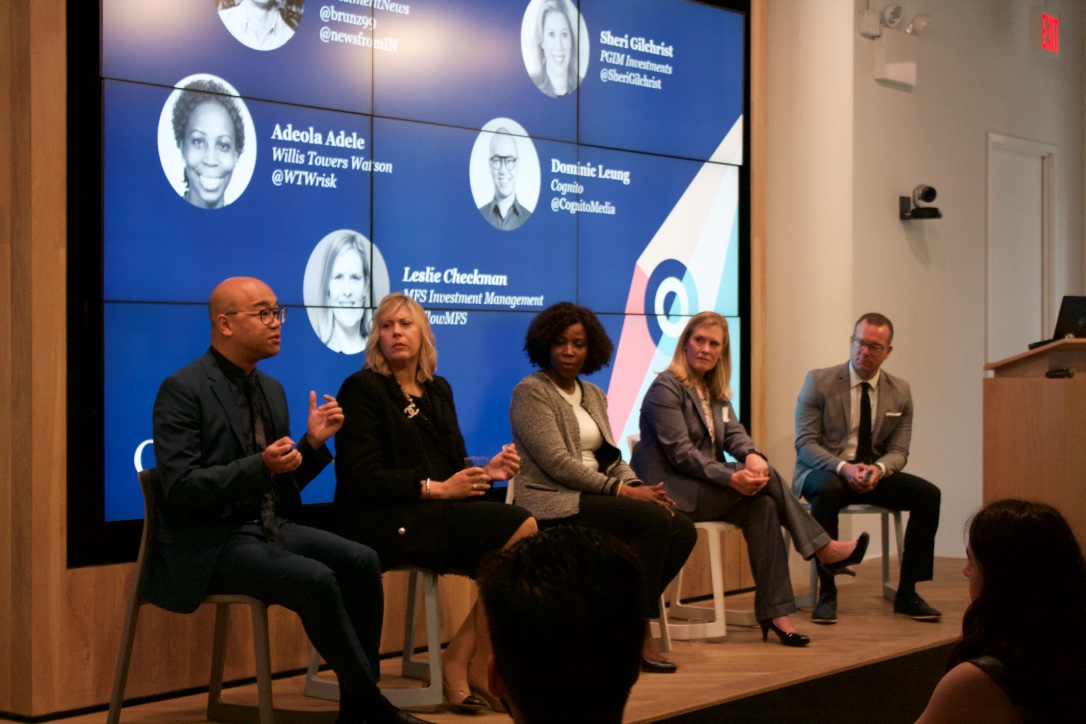Diversity drives business. According to the Center for Talent Innovation, diverse and inclusive organizations are more likely to improve market share by 45 percent. If this is true, why is financial services as an industry still one of the least diverse?
This was the question at the heart of Cognito’s diversity breakfast event last week. Held at Rise New York, the event looked at how companies can treat diversity as an opportunity to differentiate, rather than as a challenge to overcome. Moderated by Mark Bruno, Associate Publisher at InvestmentNews, the panel included executives from PGIM Investments, Willis Towers Watson, MFS Investment Management, and Cognito.
So how do we define, tackle, and measure the success of diversity and inclusion (D&I) initiatives across marketing and communications in the financial services space? Let’s take a closer look at some of the nitty gritty behind this topic:
Diversity Defined: It’s a mindset, not a stock image
Proving you are a diverse company is no longer just posting a stock photo on your website, remarked panelist Sheri Gilchrist, Global Chief Marketing Officer at PGIM Investments. Diversity is a mindset; it’s about showing differentiation and understanding that what works for one person may not work for the next. This is especially true when it comes to communicating to international audiences with different cultures and ethnicities. Leslie Checkman, Vice President of Retail Marketing at MFS Investment Management (MFS), spoke about how MFS has looked to bring more diverse opinions into its organization. Rather than looking at issues around financial investing for women, financial advisors instead talk about financial well-being.
Overcoming pushback: Establish the runway
Internal education is key and the ‘frozen middle’ still exists, according to Adeola Adele, Senior Director of Cyber Risk Solutions at Willis Towers Watson. Companies need to educate employees that D&I is not just a fad that is going to fade like Ugg boots and jean skirts. Sometimes the biggest obstacles are internal, and companies need the “runway and the flexibility of mind to adapt,” suggested Gilchrist. You can’t go into an internal or client meeting with one view before understanding cultural differences and nuances. It’s essential for companies to educate employees through unconscious bias training so they can use what they learn internally to benefit the business.
Measuring Success: Not all ROI is created equal
Bruno goes on to ask the panel, now that we understand what diversity is and the pushback companies face in implementing D&I initiatives, how do we measure our efforts? Diversity is not just a box you can tick off, but it’s about integration. Cognito Group Strategy Director, Dominic Leung, says you can measure success based on whether the behaviors have been integrated into the business. Evaluating the success of any D&I initiative goes beyond financial performance. D&I success is directly measured by a company’s reputation in the market – their willingness to purchase, willingness to partner, and how they target the consumer.
The panel concluded with the question of setting timeframes for hitting D&I metrics. When it comes to marketing diversity in financial services, think beyond the numbers and the dates. As a company, you must adapt an open mindset, educate staff internally on the importance, and build the path for change and flexibility. Real, sustainable change must be achieved organically, not engineered to meet a mark by a predetermined deadline. As Leslie summed up, maybe the true litmus test will be whether we still need panels on the topic of diversity in five years’ time. By creating strategies that enable diverse teams, engaging the totality of your business, and incorporating the philosophy of diversity into your corporate strategy, we can help ensure we don’t.
Interested in implementing some of these solutions? Get in touch with the Cognito team to learn more.
Mariah Measey is an account manager in Cognito's New York office

